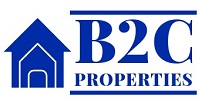Investing in property can be a lucrative way to build wealth, but it requires careful planning and consideration. Here’s a comprehensive guide to property investment:
- Understand Your Investment Goals
- Income vs. Growth: Decide whether you are looking for regular rental income (cash flow) or long-term property value appreciation (capital growth).
- Risk Tolerance: Assess your risk tolerance and how much you are willing to invest.
- Research the Market
- Market Trends: Study market trends, including property prices, rental yields, and economic indicators.
- Location Analysis: Evaluate different locations for investment potential, considering factors like employment rates, population growth, infrastructure development, and neighborhood amenities.
- Property Type: Decide on the type of property you want to invest in (e.g., residential, commercial, multi-family, single-family).
- Financing Your Investment
- Budget: Determine how much you can afford to invest, including down payment, mortgage, and additional costs (e.g., repairs, management fees).
- Mortgage Options: Explore different mortgage options and get pre-approved to understand your borrowing capacity.
- Leverage: Understand how leveraging works and the risks involved in using borrowed funds for investment.
- Build Your Team
- Real Estate Agent: Find an experienced real estate agent who specializes in investment properties.
- Mortgage Broker: Work with a mortgage broker to find the best financing options.
- Property Manager: Consider hiring a property manager if you plan to rent out the property and do not want to manage it yourself.
- Accountant and Legal Advisor: Consult with an accountant and a legal advisor to understand the tax implications and legal requirements of property investment.
- Finding the Right Property
- Property Search: Use online platforms, real estate listings, and your agent’s network to find suitable properties.
- Property Evaluation: Assess the potential properties based on location, condition, price, and rental potential.
- Inspections: Conduct thorough inspections to identify any potential issues and estimate repair costs.
- Conduct Due Diligence
- Market Value: Ensure the property is priced correctly by comparing it with similar properties in the area.
- Rental Yield: Calculate the rental yield by dividing the annual rental income by the property’s purchase price.
- Expenses: Estimate all ongoing expenses, including property taxes, insurance, maintenance, and management fees.
- Legal Checks: Perform title searches and check for any liens or encumbrances on the property.
- Making the Purchase
- Offer: Make a competitive offer based on your evaluation and market conditions.
- Negotiation: Be prepared to negotiate the price and terms of the sale.
- Closing: Complete the purchase process, including signing contracts and transferring funds.
- Managing Your Investment
- Tenant Screening: Carefully screen potential tenants to ensure reliability and minimize risks.
- Lease Agreement: Draft a comprehensive lease agreement outlining the terms and conditions of the rental.
- Property Management: Either manage the property yourself or hire a property management company to handle day-to-day operations.
- Maintenance: Keep up with regular maintenance to preserve property value and ensure tenant satisfaction.
- Maximizing Returns
- Rent Optimization: Regularly review and adjust rental rates based on market conditions.
- Cost Management: Keep track of all expenses and look for ways to reduce costs without compromising on quality.
- Tax Benefits: Take advantage of tax deductions available for property investors, such as mortgage interest, property taxes, and depreciation.
- Exit Strategy
- Plan Ahead: Have a clear exit strategy, whether it’s selling the property for a profit, refinancing, or holding it for long-term income.
- Market Conditions: Monitor market conditions to determine the best time to sell or refinance.
- Tax Implications: Understand the tax implications of selling your investment property, including capital gains tax.
Key Metrics to Monitor:
- Cash Flow: The difference between rental income and expenses.
- Capital Growth: The increase in property value over time.
- Return on Investment (ROI): The percentage return on your initial investment.
- Net Operating Income (NOI): The income generated from the property after deducting operating expenses.



